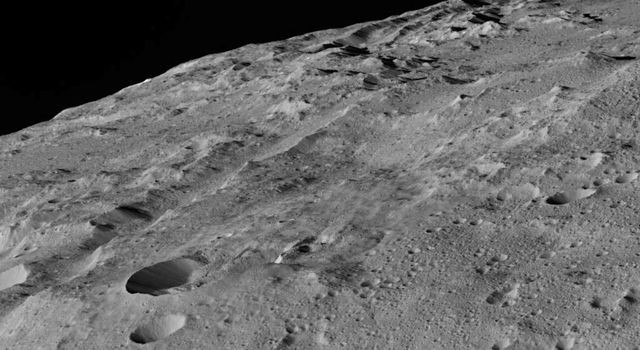NASA's Dawn spacecraft has completed its closest approach to the surface of dwarf planet Ceres, located in the major asteroid belt located between Mars and Jupiter.
The probe reveals some intriguing, detailed images of the surface of the dwarf planet during its first closest flyby. Dawn spiralled down the surface of the icy planet, as the spacecraft captured a complex cratered surface in even greater detail than ever before.
The tiny probe captured these high resolution images from the southern hemisphere of Ceres last December 10 with the closest altitude of 240 miles just above the surface of Ceres. Dawn will also maintain its distance until the remaining leg of its mission where the resolution of these new set of images are taken at 120 feet per pixel.
Ceres' impressive features are a chain of craters known as Gerber Catena located in the western region of a large crater called Urvara. These canyons are commonly seen on planets where they are usually formed by contractions and impact stresses that can load the crust with large mountain formations.
This type of fracturing seen all over the surface of Ceres suggests that similar processes are behind these, producing these features at 584 miles in diameter. The canals and surface grooves on the dwarf planet were most likely made from these geological processes, however, some could be produced from tectonic sources, revealing internal stresses that eventually cracked its crust.
According to Paul Schenk from NASA's Dawn science team, these features have been so prominent but the processes behind them are still unknown that can be linked to the complex structure of Ceres' crust.
Using Dawn's backup framing camera, these new images were obtained from it since the principal framing camera began its mission while Dawn is at the lowest orbit from Ceres since December 16 when both cameras are in operation.
Apart from this new view of Ceres' complex features, mysterious, bright spots on Ceres specifically inside the craters were now identified as salt that could be a type of magnesium sulfate known as hexahydrite. Scientists also discovered that there are clays that contain ammonia on Ceres which suggests that Ceres could have evolved near Neptune and migrated inward the solar system.



























